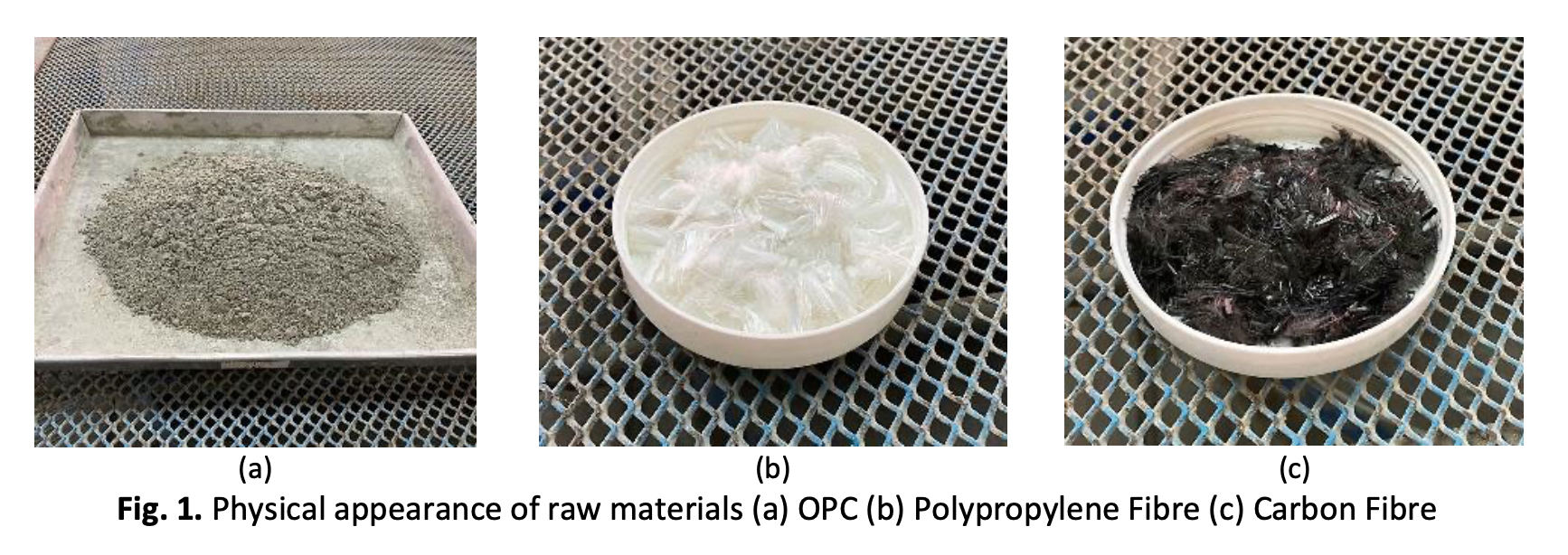Engineering Properties of Cement-Paste with Polypropylene and Carbon Fibres
DOI:
https://doi.org/10.37934/aram.115.1.98106Keywords:
Cement-paste, fibre reinforced, carbon fibre, polypropylene fibre, engineering propertiesAbstract
Concrete has strong compressive strength, but it is brittle and vulnerable to tension-induced failure. To address the issue, this research investigated the effect of the addition of fibre on the engineering properties of cement paste. There were two fibres examined in this study, which include polypropylene fibre (PF) and carbon fibre (CF). The engineering properties that were studied include flowability, hardened density, compressive strength, and flexural strength at 7, 28, and 56 days. The results indicated that the addition of fibre had only subtle effects on workability, attributed to a judiciously chosen low-volume fraction of fibres. Notably, a consistent increase in hardened density, compressive strength, and flexural strength was observed over the curing period, driven by ongoing hydration processes. Therefore, it can be concluded that the incorporation of PF and CF significantly improved cement paste engineering properties, outperforming the control specimen in hardened density, compressive strength, and flexural strength.
Downloads



























